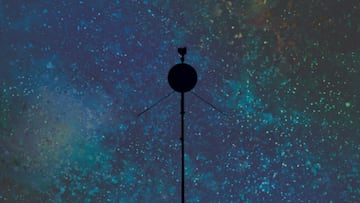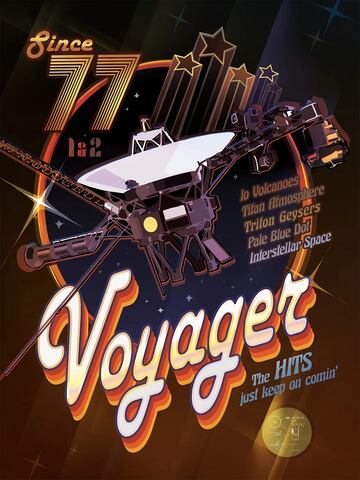How has NASA managed to keep the Voyager probe sending data back to Earth?
The Voyager 1 & 2 are boldly going where no spacecraft have gone before. But interstellar space can be harsh and could’ve caused Voyager 1′s brief silence.

After 50 years of service the Voyager space probes are the longest continuously operating spacecraft. They are currently boldly going where no spacecraft have gone before.
First Voyager 1 in 2012 and then Voyager 2 six years later have been racing out into the unknown after they entered interstellar space. But outside the protective heliosphere provided by the Sun, interstellar space is an even harsher environment rife with cosmic radiation. This could have been what caused Voyager 1 to go silent in November last year.
How has NASA managed to keep the Voyager probe sending data back to Earth?
NASA’s Voyager 1 spacecraft broken its five-month silence in April to transmit a vital message from a staggering 15 billion miles away. After a meticulous engineering endeavour spanning weeks, the Voyager team at NASA’s Jet Propulsion Laboratory successfully orchestrated a complex relocation and adjustment of crucial onboard software, marking a pivotal moment in space exploration.
Since November, Voyager 1 had fallen silent, ceasing to relay any usable data back to Earth. Despite this communication blackout, NASA’s mission controllers could discern that the spacecraft remained operational, receiving commands without issue. The culprit behind the data blackout was traced to a malfunctioning chip within the Flight Data Subsystem, responsible for packaging and transmitting scientific and engineering data.
In March, the Voyager engineering team at JPL identified the root cause of the issue and devised an ingenious plan to revive the spacecraft’s data transmission capabilities. Unable to repair the faulty chip, they ingeniously distributed the affected code sections across different locations within the FDS memory. This required meticulous adjustments to ensure seamless functionality and synchronisation of the divided code sections.

On 18 April, the first phase of the plan was set into motion as the team relocated the crucial code responsible for packaging engineering data. Given the immense distance between Voyager 1 and Earth, each command and response required a staggering 22 and a half hours to traverse the vast expanse of space. Two days later, the eagerly awaited confirmation arrived – Voyager 1 had successfully resumed transmitting usable data, signalling a triumphant victory for the mission team.
With the first hurdle overcome, the Voyager team now sets its sights on the next phase of the mission: relocating and adjusting the remaining affected sections of the FDS software. These adjustments pave the way for Voyager 1 to resume its scientific endeavours, providing invaluable insights into the mysteries of interstellar space.
What is aboard Voyager 1?
As detailed by NASA, Pioneers 10 and 11, precursors to Voyager, carried small metal plaques marking their origin in space. Inspired by this, NASA embarked on a grander project for Voyager 1 and 2.
They included a phonograph record, a 12-inch gold-plated copper disk, as a time capsule to convey Earth’s story to potential extraterrestrial discoverers. Carl Sagan, along with a team from Cornell University and others, curated its contents. The record features 115 images, diverse natural sounds like waves and animal calls, music from different cultures and times, and greetings in fifty-five languages, along with messages from President Carter and U.N. Secretary General Waldheim.
Meanwhile, Voyager 2 continues to operate flawlessly, cementing its status as a testament to humanity’s enduring spirit of exploration. Launched over four decades ago, the Voyager twins stand as iconic symbols of mankind’s quest for knowledge, having embarked on an extraordinary journey that has taken them beyond the confines of our solar system.





